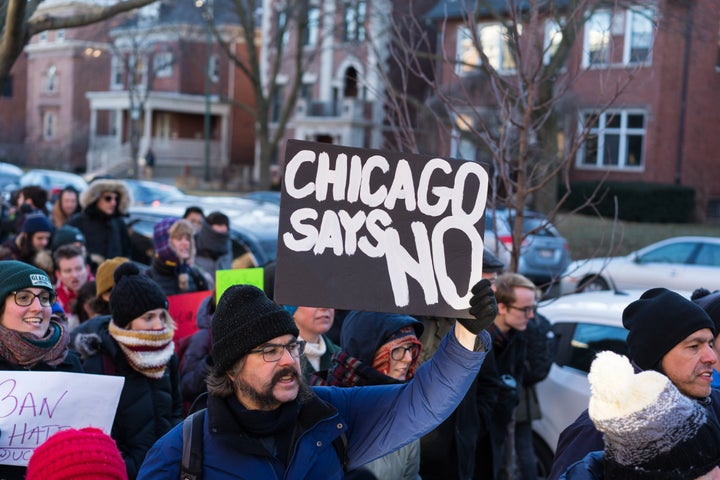
If recent events are any indication, heated debates about free speech may continue to consume our college campuses.
The latest kindling thrown on the fire was an incident at the University of Chicago, where Steve Bannon was invited to speak, and another at Princeton University, where a professor teaching a class on hate speech repeatedly used the n-word.
On campus and beyond, when debates about campus speech flare up, those involved generally fall into one of two groups. On one side: free speech absolutists, who maintain that the ability to speak uncensored is integral to productive academic discourse and a thriving democracy and, drawing on Whitney v. California, that the response to reprehensible speech is more speech. On the other: those who assert that some types of speech are simply beyond the pale and have no place on campuses of higher learning, or perhaps even in society as a whole.
More often than not, both sides miss the point, devoting undue energy to the “free speech” part of the debate and too little attention to the “on campus” part of it.
College campuses are — or should be — designed for learning. With that in mind, framing “free speech” incidents in terms of pedagogy while considering issues of power might yield a more productive conversation. The response to the recent incident at Princeton illustrates how focusing on pedagogy and power can change our understanding of the campus speech issue.
In a class on hate speech, professor Lawrence Rosen reportedly posed a hypothetical question intended to strike students as a gut punch: Is it worse for a white man to punch a black man or call him a “n****r”? In response, students questioned his use of the word, a few walked out and one allegedly directed an expletive at Rosen. Rosen declined to apologize or reconsider the use of the racial slur.
Students are not beyond critique, and sometimes they react with a degree of passion and intensity that feels surprising or unwarranted. But dismissing those reactions as baseless outrage is inappropriate. On college campuses, those charged with the education of young people would do well to seek first to understand students, then to be understood by them. That means taking their responses seriously and hearing them out, not deriding them as “bullies.”
Unfortunately, much of the discussion of a rise in “illiberalism” on campus invokes a “both sides” framing that imagines students as equal players on a level playing field with well-paid, prominent speakers or professors. Penn professor Jonathan Zimmerman’s response to the Princeton incident, in which he criticized the students who challenged Rosen, is an excellent example of this sort of perverse understanding of the power dynamics at play in the classroom and on campus. Zimmerman argues that students “insisting that his [Rosen’s] words intimidated them … are the real bullies.” Even if one operates on the assumption that students and professors are participants in a marketplace of ideas, or that students are customers and institutions of higher education serve them, it stretches the limits of believability to assert that students are somehow in a position of power over famous speakers or tenured academics.
There’s another way to read what happened in Rosen’s classroom, one that takes into account the relative position of students and a tenured professor and situates the incident in the context of a university campus. If we recognize the power disparities between Rosen and his students, and recognize that the college campus is meant to be a place of learning, we might also see the students who confronted Rosen not as an illiberal mob but as a group of students questioning the pedagogical choices of a faculty member.
This is entirely appropriate for members of an academic community. Focusing on pedagogy rather than on “free speech” allows us to view this incident, and others like it, somewhat differently. For example, rather than asserting Bannon’s right to speak on campus, we might ask, “What of value does Bannon have to contribute to an academic discussion of contemporary politics in the U.S.?” Likewise, in Rosen’s case, we might ask, “What pedagogical value is derived from the instructor’s use of n****r? Does it outweigh the potential harm done to students? Does it help them learn, or hinder their education?”
Although the responsibilities of a writer or other public figure are different from those of a professor, these might be appropriate considerations for issues of offensive speech that arise in our broader public discourse as well. We can do better than to imagine vocal criticism as the rabble-rousing of too-sensitive crusaders, indoctrinated by universities to participate in “call-out culture.” At universities and in public discourse, we would do well to consider the role power plays and the responsibility that those with power have to use speech prudently and carefully.
But especially on campus, because colleges are first and foremost institutions of learning, it is important that our conversations about offensive speech be framed not in terms of the abstract ideal of free speech but in terms of the more concrete goal of creating a challenging and enriching educational experience for all students. With that goal in mind, I would hope that we could more often leap to the defense of marginalized students than the privileged and powerful, or our abstract ideals.
The fires of the free speech debate are likely to rage on outside the campus gates. But universities have a distinct mission, and they are a space distinct from society at large. We need to think and talk about them accordingly.
Nadirah Farah Foley is a sociologist of education working toward her doctorate at Harvard. Her academic research examines issues of race, inequality and culture in education and society.
